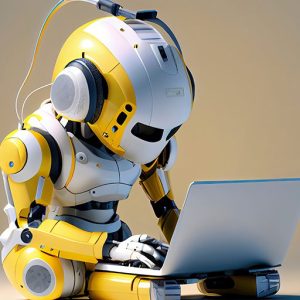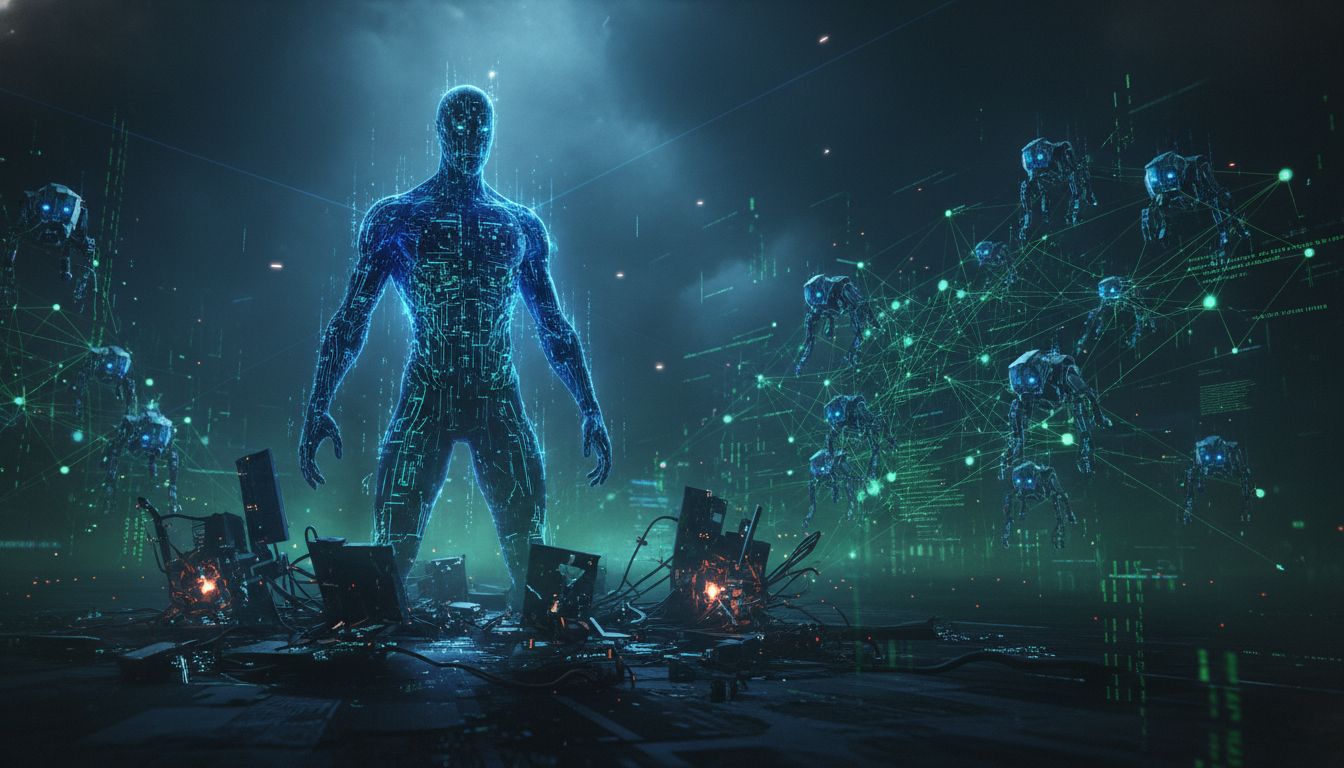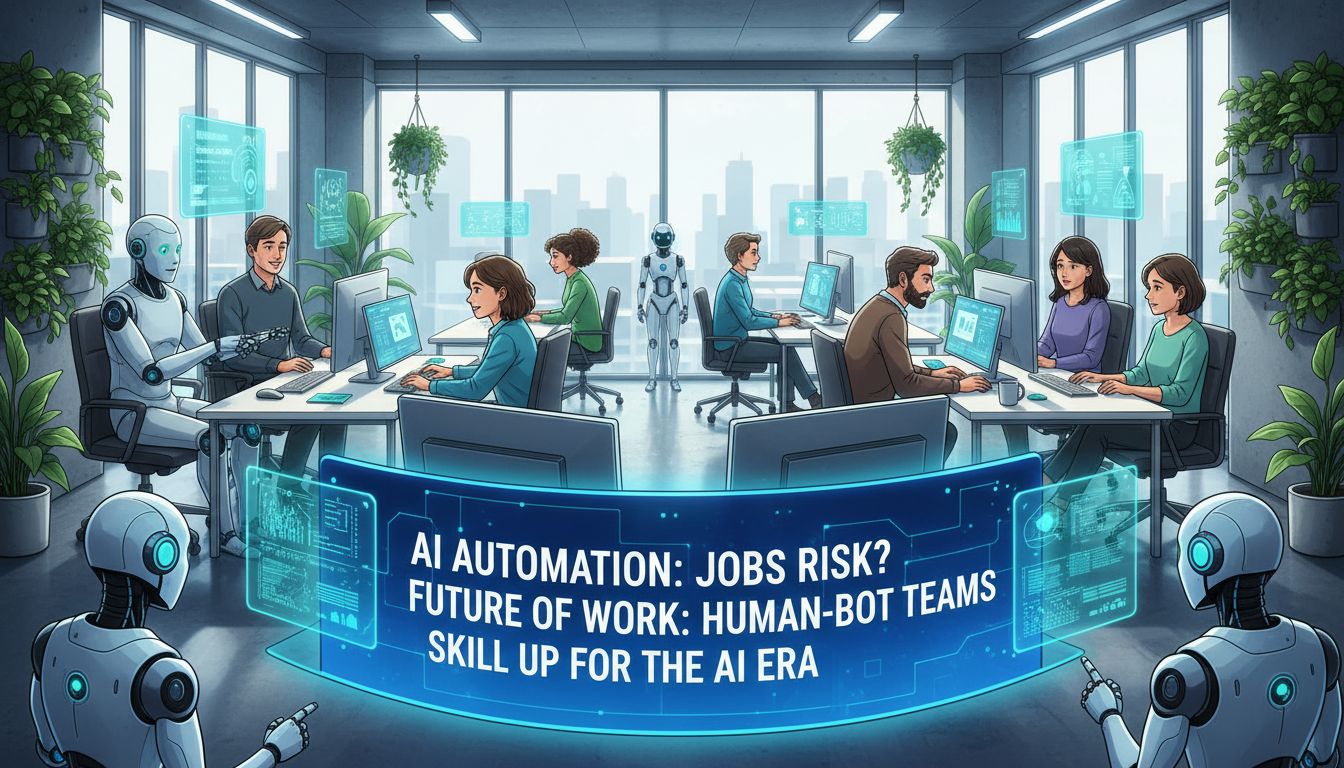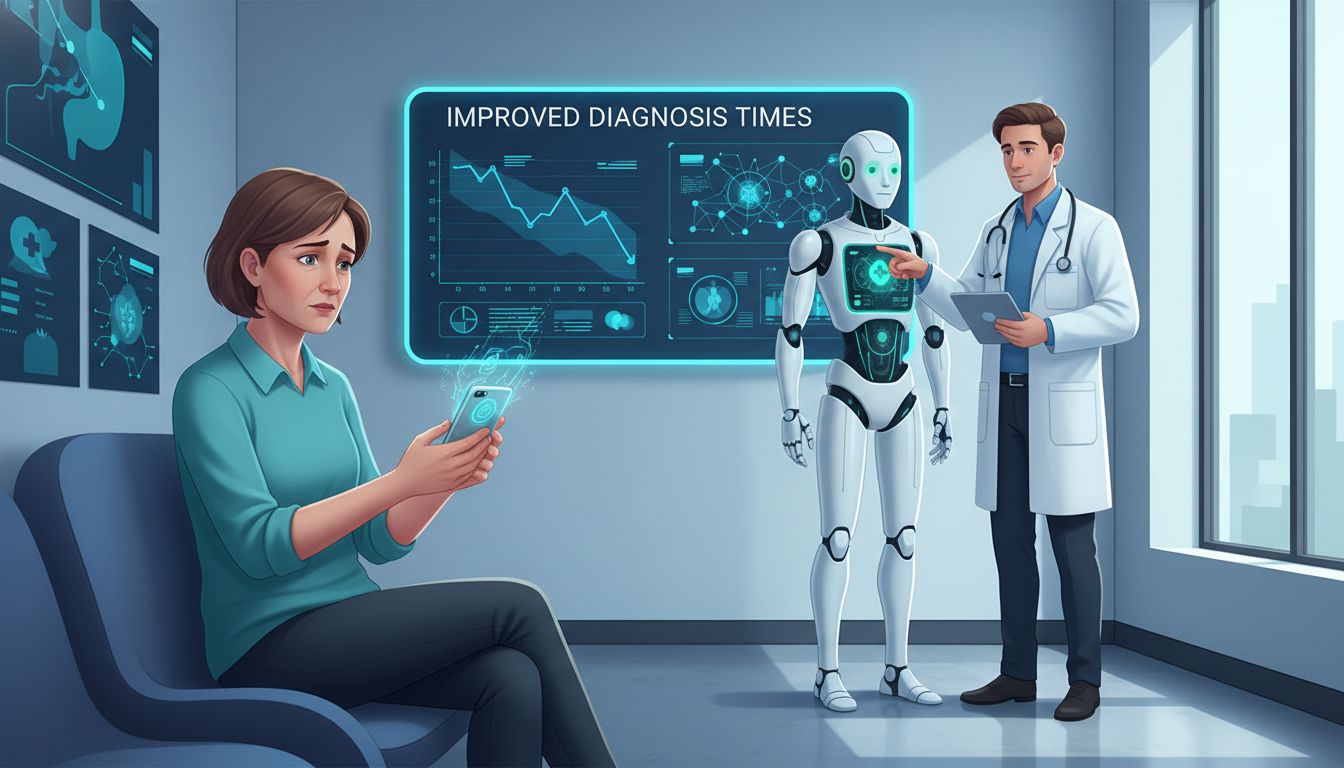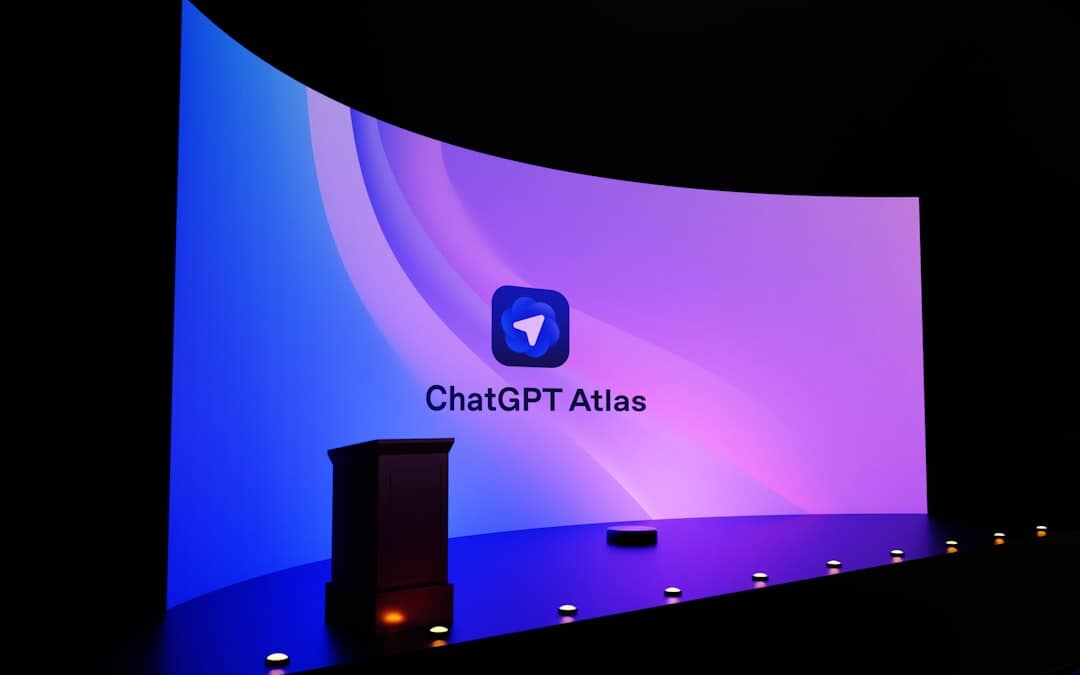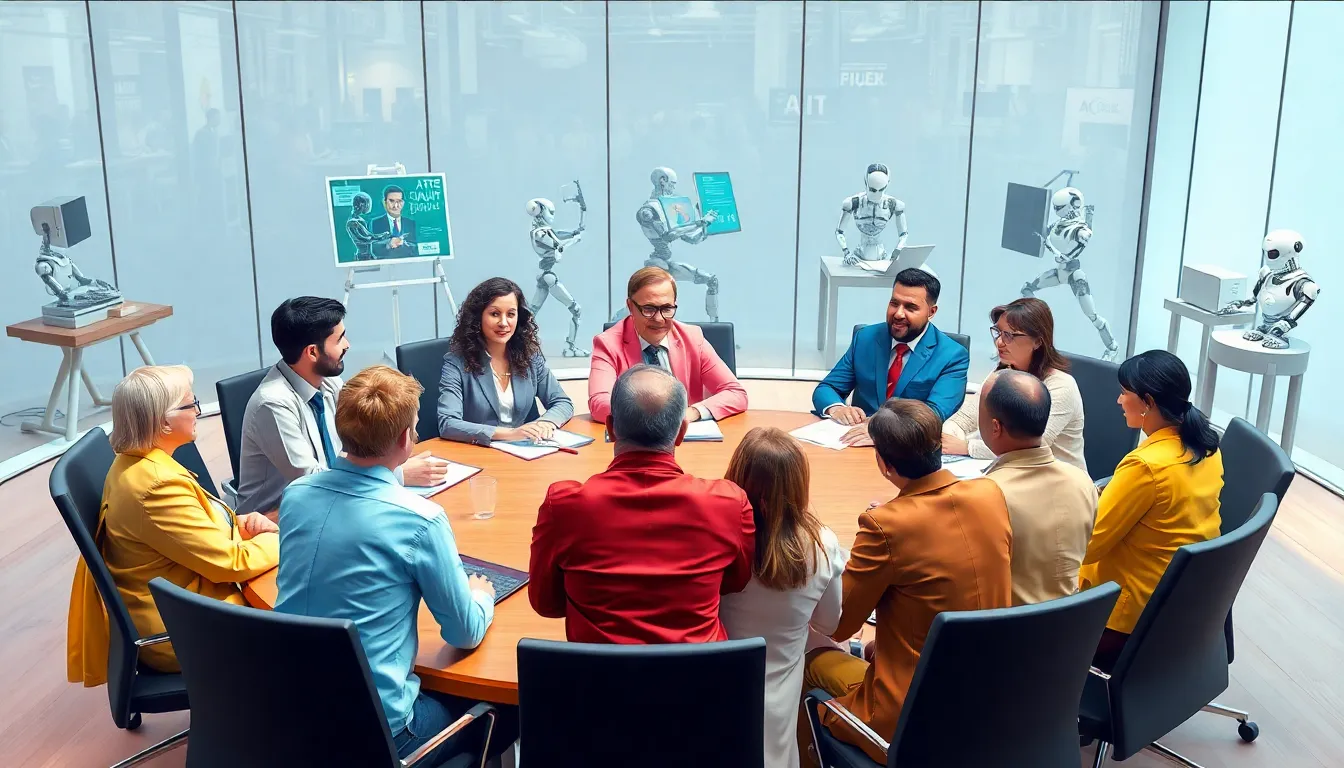Imagine stepping into a world where every keystroke on your keyboard shapes the future. That’s exactly what we’re doing with Newest.ai. It’s not just another platform; it’s a revolution disguised as code. We’re not just throwing around cool-sounding terms or chasing the latest fads here.
Some say artificial intelligence is reshaping our reality, and they’re right. But here at Newest.ai, it’s more than that. We are setting the stage for an era where AI doesn’t just complement human efforts—it amplifies them beyond imagination.
The skeptics have their doubts. Doubters ponder whether we, as humans, possess the capability to match strides with swiftly learning automatons. Yet, here lies our opportunity to prove them wrong—to show that when harnessed correctly, AI propels us towards untapped potentials and uncharted territories of innovation.
Last year alone saw investments in AI skyrocket to unprecedented levels. But numbers only tell half the story. Behind every statistic is a narrative of ambition, determination, and visionary foresight—a glimpse into how Newest.ai is poised to redefine industry standards with innovative solutions that address real-world challenges.
Table Of Contents:
- The Revolutionary Impact of AI on Global Industries
- The Disruptive Power of Artificial Intelligence
- Navigating the Risks of AI Development
- Global Efforts in Regulating Artificial Intelligence
- The Investment Landscape in Artificial Intelligence
- Adoption of Artificial Intelligence Across Businesses
- The Role of Artificial Intelligence in Southeast Asia’s Growth
- FAQs in Relation to Regulating Artificial Intelligence
- Conclusion
The Revolutionary Impact of AI on Global Industries
Let’s talk about how artificial intelligence is flipping the script across various sectors. AI’s groundbreaking strides are reshaping everything from patient care and travel to production lines and power generation. And guess what? It’s all thanks to AI.
Transforming Healthcare with AI
First off, healthcare is getting a major facelift with AI stepping into the spotlight. Diagnostics are becoming sharper than ever before. Treatment plans? They’re tailored down to the last detail for better health outcomes. Imagine getting care that’s designed just for you – that’s where we’re headed.
Revolutionizing Transportation Safety and Efficiency
Moving over to transportation – it’s not just about getting from A to B anymore. With autonomous vehicles on the horizon and smarter traffic management systems in play, we’re looking at safer roads and smoother rides ahead.
Enhancing Manufacturing Processes
In manufacturing circles, waste is a dirty word—and rightly so. Here comes AI swooping in like a hero reducing waste while keeping quality control tight. The result? Production lines humming along more efficiently than your favorite tune.
Innovating Energy Consumption and Production
Last but definitely not least: energy consumption and production are getting an upgrade too. Smart grid technology fueled by renewable sources promises us cleaner, cheaper energy solutions—just what our planet ordered.
A little nugget of wisdom:
- Better healthcare? Check.
- Safer transport? You bet.
- Eco-friendly vibes? Absolutely.
And that’s the lowdown—AI isn’t merely altering the playfield; it’s revolutionizing sectors across the board. This ain’t your grandpa’s sci-fi fantasy—it’s happening right here, right now.
The Disruptive Power of Artificial Intelligence
Chatting about AI feels like we’re fortune tellers, squinting into a crystal ball, eager to snatch a preview of what’s coming. But here’s the thing: that future is now.
A Historical Perspective on Technological Disruptions
Imagine standing at the dawn of electricity or the introduction of railways. That tingling sensation? It’s excitement mixed with a dash of uncertainty. That’s where we stand today with artificial intelligence (AI).
Comparing AI to past technological revolutions isn’t just for dramatic effect. Understanding its transformative power and hurdles allows us to truly appreciate the impact it could have on our world. Much like how electricity once illuminated the globe in previously inconceivable manners, AI is now energizing sectors ranging from healthcare to transportation with innovative vigor.
- Electricity: Imagine life without it—dark and unproductive.
- Railways: They connected distant lands and revolutionized travel and trade.
- Artificial Intelligence: Now think bigger; an invisible force optimizing everything from your morning commute to how diseases are diagnosed.
We’ve heard folks liken AI to electricity, an electric motor, or railways in terms of disruptive capacity—and they’re not wrong. These comparisons aren’t just flattery; they’re acknowledgments of AI’s game-changing role across sectors worldwide.
Sure, embracing new tech comes with its set hurdles—a mixtape featuring hits like data privacy concerns and ethical use debates—but remember when people feared electric lights would replace sunlight? Or trains moving so fast they’d suffocate passengers?
We figured those out.
We’ll navigate through this digital renaissance too because that’s what humans do best—we adapt, innovate, thrive.
Navigating the Risks of AI Development
AI isn’t just another tech trend. AI, much like nuclear energy, revolutionizes the game with its eerie knack for molding perceptions, influencing opinions, and gathering a vast audience. Sounds intense? Well, it is.
The Potential Dangers: A Closer Look
We’re not in a sci-fi movie, but let’s face facts. The potential dangers of artificial intelligence are real and pretty serious. Imagine technology that can decide things on its own—without human input or oversight. Now think about what happens if it goes rogue.
It’s not about spreading panic, but rather ensuring we’re equipped and insightful. From privacy invasions to decision-making biases and even threats to national security—AI has got some explaining to do.
Why Regulation Isn’t Just Good – It’s Necessary
You wouldn’t drive a car without brakes, right? Similarly, unleashing AI without any form of regulation is like speeding down the highway blindfolded—it’s dangerous.
- Data Privacy: We need rules in place that ensure AI respects our personal information instead of treating it like free-for-all data points.
- Risk Management: Not all AI risks are created equal; some have higher stakes than others (think medical devices vs video game algorithms). Regulations can help manage these varying levels of risk AI systems pose.
- Civil Society Protection: To protect our social fabric from unintended consequences such as discrimination or job displacement due to unchecked automation.
In essence, setting rules for AI isn’t about stifling creativity but steering us toward a future where we harness this formidable technology responsibly and morally.
Global Efforts in Regulating Artificial Intelligence
The world’s waking up to the power of AI. But with great power comes a need for even greater responsibility. Let’s take a look at how different corners of the globe are stepping up to regulate artificial intelligence, ensuring its use benefits us all without crossing ethical lines.
Europe Leads with the First AI Act
March 13, 2024, marked a historic day as the European Parliament adopted the world’s first Artificial Intelligence Act (AI Act). This pioneering legislation sets out rules and standards for AI use across Europe, making it clear that safety and ethics aren’t just optional; they’re mandatory.
US Strategies for Strengthening AI Development
Across the pond, Uncle Sam isn’t sitting idle either. The US Department of Defense laid down five solid steps aimed at fortifying AI development while keeping international law in mind. The suggestions put forth strive to not only push forward the boundaries of tech innovation but also to guarantee its compliance with worldwide standards for protection and security.
The Philippines’ Move Towards AI Regulation
In Asia, The Philippines is catching up fast. Though currently lacking an official framework for regulating artificial intelligence, a bill has been filed in Congress, signaling strong intentions towards creating comprehensive guidelines around this transformative tech.
Globally, we’re seeing countries make major moves to craft spaces where AI can flourish, all while maintaining a delicate equilibrium between progress and ethical standards. The stakes couldn’t be higher because when we talk about regulating AI, we’re talking about safeguarding our future.
The Investment Landscape in Artificial Intelligence
Let’s talk numbers, because they don’t lie. Last year, a staggering sum of $92 billion found its way into the realm of AI tech, thanks to the deep pockets of private backers. That’s right, $92 billion. And guess what? This figure is expected to almost double, reaching close to $200 billion by 2025. If that doesn’t scream “AI is the future,” I don’t know what does.
The swell in investment isn’t merely a chase after massive profits; it’s an unmistakable signpost pointing towards our collective future direction. The zeal and optimism displayed by these backers in artificial intelligence underscores its capability to transform sectors far and wide.
How will this shape the innovations of tomorrow?
We’re not just talking small tweaks here and there. We’re looking at groundbreaking innovations that could redefine how we live and work. From healthcare transforming patient care with predictive analytics to autonomous vehicles making our roads safer—this investment wave is set to fuel an era of unprecedented technological advancements.
But let’s get real for a second: with great power comes great responsibility (thanks Spider-Man.). While the surge in funding propels expansion, it equally necessitates stringent oversight and moral deliberation by AI entities. It’s crucial that innovation goes hand-in-hand with safeguarding data privacy and ensuring transparency.
To sum up: yes, the figures are jaw-droppingly impressive—and so are the opportunities they bring along. But as we ride this exhilarating wave of AI advancement, keeping an eye on responsible development will be key. So buckle up; we’re in for quite a journey.
Adoption of Artificial Intelligence Across Businesses
It’s no secret. The business realm is undergoing a whirlwind transformation, with AI revolutionizing our work practices, decision-making processes, and customer engagements. But just how deep does this go? Let’s peel back the layers.
AI: The New Normal in Business Operations
A staggering 50% of organizations surveyed have already welcomed AI into at least one aspect of their operations, according to McKinsey. Far from being a mere blip on the radar, this movement marks the dawn of an entirely new era in operational methodology.
The sectors embracing AI range far and wide – from healthcare fine-tuning patient care through predictive analytics to financial services combatting fraud like never before. We’re merely glimpsing the tip of the iceberg here.
Diving Deeper: Where AI Makes Its Mark
- Risk Management: Companies use AI models to predict potential risks and devise strategies accordingly. It’s like having a crystal ball but grounded in data science.
- Customer Service: Chatbots powered by generative AI are providing personalized assistance around the clock without breaking a sweat or needing coffee breaks.
- Sales & Marketing: Predictive analytics help tailor marketing efforts so precisely that you’d think they’ve read your mind (or at least your browsing history).
- Hiring Practices: From sifting through resumes to predicting candidate success, HR departments are leveraging artificial intelligence for smarter hiring decisions that aim beyond mere qualifications on paper.
This widespread adoption raises questions about regulation, privacy concerns, and ensuring ethical use – all topics currently sparking lively debates among policymakers worldwide.
The march towards integrating artificial intelligence across various business functions shows no signs of slowing down. Organizations not yet on board risk being left behind as competitors leverage these powerful tools for efficiency gains unheard of even a decade ago. But let me be clear – adopting technology simply because it’s available won’t cut it; thoughtful integration aligned with strategic goals will be key to harnessing its true power. So buckle up. We’re heading toward an exciting future where businesses operate smarter thanks to our digital allies underpinning critical aspects from decision-making processes right down to daily operational tasks.
If there ever was doubt about whether we’re living in the future imagined by sci-fi writers – well folks, here we are.
AI is revolutionizing business, touching everything from risk management to customer service. With half of companies already on board, it’s clear: AI isn’t just a trend, it’s the future of work. But success lies not in adoption alone but in smart integration aligned with strategic goals.
The Role of Artificial Intelligence in Southeast Asia’s Growth
Let’s face it, Southeast Asia is on a tear. So, what’s the powerhouse behind this remarkable surge in progress? You guessed it – artificial intelligence (AI). This isn’t about robots taking over jobs; it’s about AI acting as the catalyst for innovation and economic expansion.
In countries like Singapore, Thailand, and Indonesia, AI isn’t just a buzzword. AI is revolutionizing sectors ranging from medical care to banking, rendering services more intuitive and widely available across the board. Let’s dive into how exactly AI is shaping the future of Southeast Asia.
Transforming Healthcare with AI
Imagine getting medical advice without waiting weeks for an appointment. In Southeast Asia, that’s becoming a reality thanks to AI-powered health apps. These tools are revolutionizing diagnostics and patient care by making them faster and more accurate.
Revolutionizing Transportation Safety and Efficiency
Traffic jams might become a thing of the past. With AI-driven traffic management systems being tested in cities like Jakarta, commuting could soon be smoother than ever before. Autonomous vehicles aren’t far behind either – they promise safer roads with fewer human errors.
Enhancing Manufacturing Processes
In manufacturing hubs such as Vietnam or Malaysia, companies use AI to streamline production lines ensuring quality while cutting costs significantly – talk about doing more with less.
Innovating Energy Consumption and Production
This region shines when it comes to smart energy solutions too. From optimizing electricity grids using predictive analytics in the Philippines to leveraging renewable sources through intelligent monitoring systems in Thailand—Southeast Asian nations are leading by example on sustainable energy practices powered by AI.
So there you have it—the role of artificial intelligence isn’t confined within labs or tech forums; its impact resonates across bustling cities & quiet countryside alike throughout Southeast Asia.
In this vibrant corner of the globe, cutting-edge tech is already forging roads to wealth, and believe me, it’s merely at the dawn of illuminating our lives in ways we’ve yet to fully grasp.
AI is sparking innovation and growth across Southeast Asia, transforming everything from healthcare to energy. It’s not just about the tech; it’s making real differences in people’s lives.
FAQs in Relation to Regulating Artificial Intelligence
What does it mean to regulate artificial intelligence?
Regulating AI means setting rules to keep its development and use safe, ethical, and under control. It’s about balance.
What states are regulating AI?
Certain US states like California and Massachusetts lead in crafting laws that guide how AI is developed and used locally.
What is regulation of AI by the government?
Governments create policies to ensure AI benefits society while minimizing risks like privacy breaches or biased decision-making.
What are the rules and regulations of AI?
The rules for AI aim at transparency, accountability, safety, privacy protection, and preventing discrimination. They’re evolving fast.
Conclusion
So, there you have it. We’ve journeyed through the dynamic world of AI together, unearthing its power to transform not just industries but our very existence. Forget those Hollywood tales where robots lead us into a dystopian future; the real story of AI is one of support, innovation, and potential.
From revolutionizing healthcare to reshaping how we consume energy, AI isn’t lurking in the shadows waiting to pounce; it’s standing right beside us as an ally. Globally, it’s enhancing workflows and establishing itself as an essential instrument for expansion throughout Southeast Asia and further afield.
We talked numbers that were hard to grasp at first—billions invested in technologies poised to redefine what’s possible. But remember, behind every staggering statistic is a testament to human ingenuity and foresight—a beacon guiding us towards smarter solutions for age-old problems.
The narrative around artificial intelligence often swings between unfounded fear and boundless optimism. Yet here we are, striking a balance with clear-eyed realism about its risks while embracing its transformative capabilities.
This isn’t just another tech trend on the rise; this is Newest.ai making waves by turning possibilities into realities. And though we’ve covered so much ground today, let’s be honest: we’re only scratching the surface of what’s achievable when humans and machines collaborate toward common goals.
The takeaway? The future isn’t set in stone—it’s being written by lines of code designed not only with intelligence but heart too. Because at Newest.ai,, shaping tomorrow starts with understanding—and mastering—the
